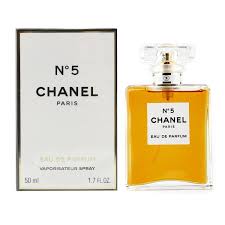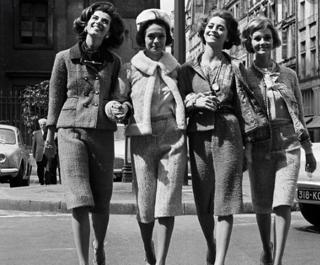Bretrick
Well-known Member
- Location
- Perth Western Australia
My idea is to write about someone you admire, be it family, musician, scientist, astronaut, photographer, chef, volunteer - et al.
I choose to write about Glen Campbell.
(Taken from various sources)
Glen was born in Arkansas in 1936.
The last of 12 children, his early life was on a farm where they barely got by growing cotton, corn, watermelons and potatoes.
Glen - "We had no electricity, and money was scarce. A dollar in those days looked as big as a saddle blanket."
To supplement income the family picked cotton for more successful farmers. "I picked cotton for $1.25 a hundred pounds," said Campbell. "If you worked your tail off, you could pick 80 or 90 pounds a day."
Campbell started playing guitar at age four after his uncle Boo gave him a Sears-bought five-dollar guitar, with his uncle teaching him the basics of how to play. By the time he was six he was performing on local radio stations.
At age fourteen he'd left home to pursue music full-time. Joining a three piece band led by his uncle Dick Bills in Albuquerque, New Mexico, he later toured the Southwest with his own band - The Western Wranglers
At twenty-four, Glen moved to L.A. and despite the fact that he couldn't read music, became one the "hottest" studio musicians in the business.
As with many musicians in the spotlight, Glen also had a period of heavy drug and alcohol use.
He got sober in the mid-1980s and became a born-again Christian.
In 1967 Campbell released "Gentle On My Mind", a song that launched his career.
In 1969 Glen Campbell sold more records than the Beatles. He has taken home more awards than anybody else.
He made history by winning a Grammy in both Country and Pop in 1967.
"Gentle On My Mind" took top Country honors and "By The Time I Get To Phoenix" won in Pop. He's been named Male Vocalist Of The Year by both the CMA and the ACM and the CMA's Entertainer Of The Year.
Glen Campbell sold over 45 million records. He recorded over 60 albums, earning twelve Gold albums, seven Platinum albums, fourteen Gold singles in the process. He's been awarded five Grammys and a Dove Award. (An accolade by the Gospel Music Association of the United States to recognize outstanding achievement in the Christian music industry. )
Glen Campbell wrote his autobiography - Rhinestone Cowboy - which was published in 1995.
He recounts his former life as a philanderer, profligate, and drug and alcohol user - including his abusive relationship with Tanya Tucker - and his eventual conversion to religion and a stable marriage.
In his own words - "If my words here prevent one person from making the mistakes I made, going the way I went, then the trip back in time will have been worth it."
I could go on forever, relating all things Glen Campbell, but a line has to be drawn sometime.
In June 2011, Campbell announced he had been diagnosed with Alzheimer's disease six months earlier. After his diagnosis was revealed, he withdrew from a scheduled Australian concert tour.
He became a patient at an Alzheimer's long term care and treatment facility in 2014. That same year, Campbell was the subject of the documentary Glen Campbell: I'll Be Me, that examined Campbell's Alzheimer's diagnosis and how it affected his musical performances during his final tour across the United States with his family. The documentary received critical acclaim, earning a rare 100% rating on Rotten Tomatoes.
Campbell died in Nashville, Tennessee on August 8, 2017, at the age of 81. He was buried in the Campbell family cemetery in Billstown, Arkansas.
In June 2020, Campbell's wife of 34 years, Kim Campbell, published Gentle on my Mind: In Sickness and in Health with Glen Campbell, a memoir of their life together
Rhinestone Cowboy
I choose to write about Glen Campbell.
(Taken from various sources)
Glen was born in Arkansas in 1936.
The last of 12 children, his early life was on a farm where they barely got by growing cotton, corn, watermelons and potatoes.
Glen - "We had no electricity, and money was scarce. A dollar in those days looked as big as a saddle blanket."
To supplement income the family picked cotton for more successful farmers. "I picked cotton for $1.25 a hundred pounds," said Campbell. "If you worked your tail off, you could pick 80 or 90 pounds a day."
Campbell started playing guitar at age four after his uncle Boo gave him a Sears-bought five-dollar guitar, with his uncle teaching him the basics of how to play. By the time he was six he was performing on local radio stations.
At age fourteen he'd left home to pursue music full-time. Joining a three piece band led by his uncle Dick Bills in Albuquerque, New Mexico, he later toured the Southwest with his own band - The Western Wranglers
At twenty-four, Glen moved to L.A. and despite the fact that he couldn't read music, became one the "hottest" studio musicians in the business.
As with many musicians in the spotlight, Glen also had a period of heavy drug and alcohol use.
He got sober in the mid-1980s and became a born-again Christian.
In 1967 Campbell released "Gentle On My Mind", a song that launched his career.
In 1969 Glen Campbell sold more records than the Beatles. He has taken home more awards than anybody else.
He made history by winning a Grammy in both Country and Pop in 1967.
"Gentle On My Mind" took top Country honors and "By The Time I Get To Phoenix" won in Pop. He's been named Male Vocalist Of The Year by both the CMA and the ACM and the CMA's Entertainer Of The Year.
Glen Campbell sold over 45 million records. He recorded over 60 albums, earning twelve Gold albums, seven Platinum albums, fourteen Gold singles in the process. He's been awarded five Grammys and a Dove Award. (An accolade by the Gospel Music Association of the United States to recognize outstanding achievement in the Christian music industry. )
Glen Campbell wrote his autobiography - Rhinestone Cowboy - which was published in 1995.
He recounts his former life as a philanderer, profligate, and drug and alcohol user - including his abusive relationship with Tanya Tucker - and his eventual conversion to religion and a stable marriage.
In his own words - "If my words here prevent one person from making the mistakes I made, going the way I went, then the trip back in time will have been worth it."
I could go on forever, relating all things Glen Campbell, but a line has to be drawn sometime.
In June 2011, Campbell announced he had been diagnosed with Alzheimer's disease six months earlier. After his diagnosis was revealed, he withdrew from a scheduled Australian concert tour.
He became a patient at an Alzheimer's long term care and treatment facility in 2014. That same year, Campbell was the subject of the documentary Glen Campbell: I'll Be Me, that examined Campbell's Alzheimer's diagnosis and how it affected his musical performances during his final tour across the United States with his family. The documentary received critical acclaim, earning a rare 100% rating on Rotten Tomatoes.
Campbell died in Nashville, Tennessee on August 8, 2017, at the age of 81. He was buried in the Campbell family cemetery in Billstown, Arkansas.
In June 2020, Campbell's wife of 34 years, Kim Campbell, published Gentle on my Mind: In Sickness and in Health with Glen Campbell, a memoir of their life together
Rhinestone Cowboy






